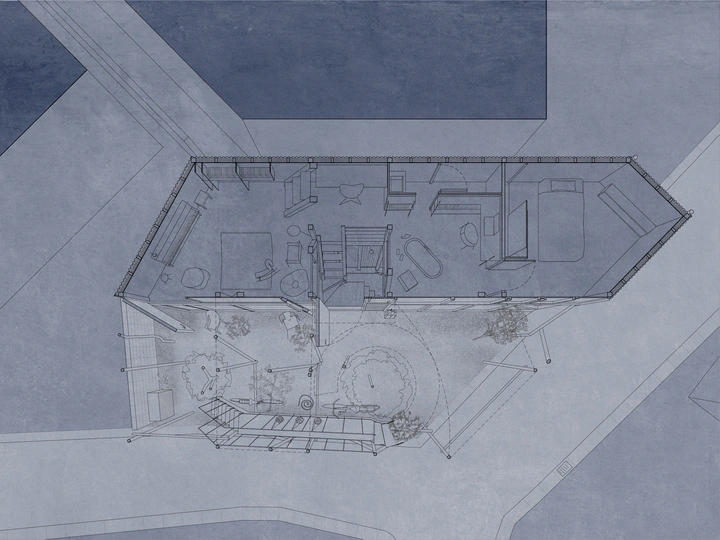Inhabited interstices

Architect and researcher from University of Seville, and guest associate researcher at Kyoto University in 2022. He is currently working on his doctoral thesis on the interstitial spaces between assembled houses and the dense city in Japan. In the academic year 2022/2023 he has participated as a teacher assitant in the Department of Architectural Projects at the University of Sevilla and has been a visiting professor at Texas Tech University. Winner of the Seville Architects College research fellowship 2021. Research Group TEP141 Project and Heritage. Archdaily Spain ‘18 Award for the Final Degree Project. He has published several articles and conferences on Japanese residential architecture, such as the International Architecture Symposium of the National University of Colombia, the Industrial Architecture Seminar of ETSA Madrid or the scientific journals EGA and VAD.
The insertion of lightweight assembled house in contexts with strict boundaries, whether normative or physical, inaccuracy situations in the intersection between those elements. This investigation proposes to study the possibilities of inhabiting the interstices and establishing a Best Practices Catalogue for the interaction between a house and a fixed boundary, extracted from several built projects, in order to understand the variety of layout options for the arrangement between a modular house and the dividing walls which surround it, giving useful answers for the Mediterranean environment. The main objective of the research has been to analyse and reach conclusions regarding the behaviour of these interstices as social and environmental regulators.
The Japanese urban context of recent decades offers a wide range of examples that have found potential spaces in the interstices between the city and the house as a means of improving the relationship between them. For this research it has been important to understand not only the current experiences, through visits to the case studies and interviews with their authors, but also how this point has been reached, through research into the history and artistic experiences that have surrounded the city.
The use of drawing has been a fundamental tool in the work process for the correct understanding and presentation of the way the interstitial spaces work.
The summary of this information means a valuable way to develop a prototype that closes the circle of this research. The final aim is to establish a novel compositional model based on the combination of rigid, modular, off-site built elements and adaptable, in-situ built elements, which are closer to the specificity of each site.